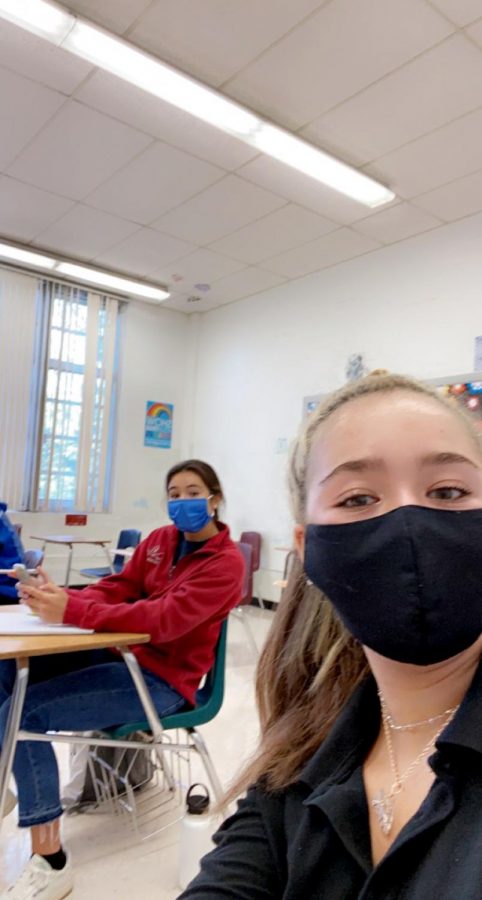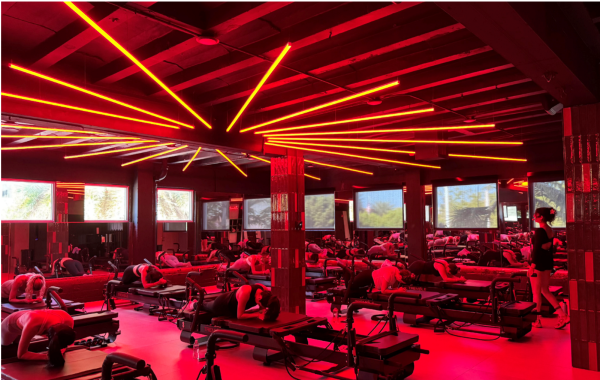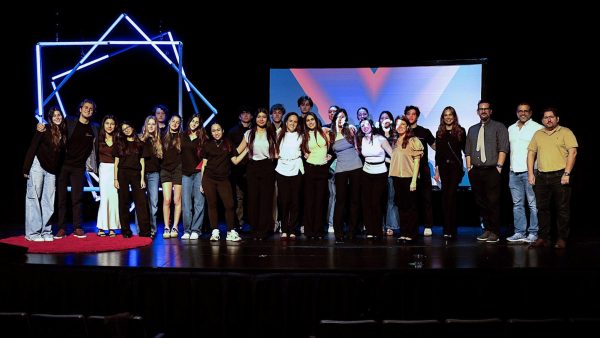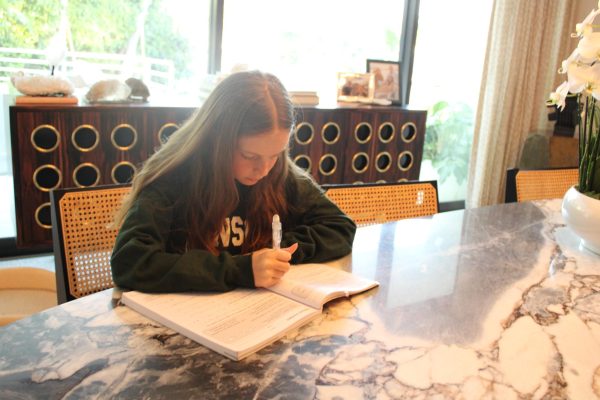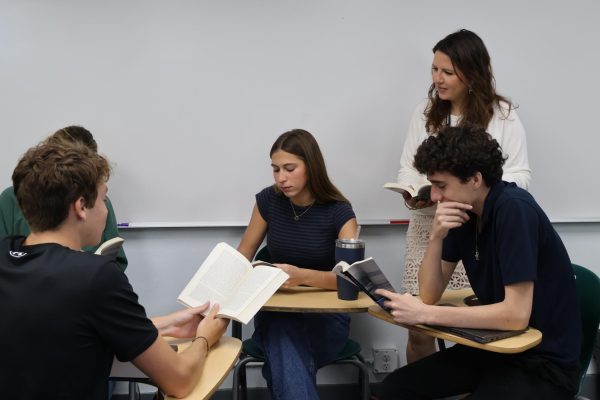One big difference between RE and public school? Time
Irene Martinez ’21 poses with her mask in her IB English Literature class. The course is one of Irene’s three “Higher Level,” or HL, classes.
“It’s just something that you have to deal with. It’s a mentality that some people have, that they are simply better than you, and it’ll affect you if you let it affect you.”
For Irene Martinez, a senior at Coral Gables Senior High, the stigma attached to public school by certain private school students, faculty, and alumni has always been a part of life. Martinez has attended public school from the very beginning. She started at Sunset Elementary’s Spanish program, then went to George Washington Carver for middle school, and is now finishing up her fourth year in the International Baccalaureate (IB) program at Gables.
Throughout her time at Sunset, Carver, and Gables, Martinez has experienced more than her fair share of the assumption—on the part of people at elite private schools throughout Miami, Ransom Everglades included—that her educational track was not a path to success. She feels the opposite: In the spring, Martinez will receive her IB Diploma, which grants her the opportunity to study at certain foreign universities that would otherwise be nearly impossible to be accepted into. This track is typical of many of her peers; around 85% of Irene’s elementary school class at Sunset, an International Studies school, went on to study in the International Studies program at Carver.
What the stigma misses about public school in Miami, according to Martinez, is a more crucial difference between high-achieving students at public schools like Gables and private schools like Ransom Everglades: time.
Earning an IB Diploma is far from easy. Martinez will have to earn a minimum of a 3 on her IB exams, three of which must be “Higher Level” (HL) classes. In her junior year she had to write a research paper of her own chosen topic. She chose alternative treatments for bacterial infections to prevent antibiotic resistance. IB Students must also complete a mandatory of 150 hours of community service throughout their junior and senior years. Martinez is using her work as treasurer of Gables’ chapter of Key Club, an international organization that hosts community service events, to fulfill only a portion of those 150 hours. One of the eight classes she is enrolled in is as a Student Aid to IB Biology teacher Mr. Eric Molina, where she assists with grading, files papers, and manages the Zoom meeting for students who are still virtual. Similar to many public schools across Miami-Dade County, Gables allows for no free periods. Martinez’s only time during her 7:15 -2:15 school day when she is not in class is her thirty-minute lunch period.
“It’s not like we don’t have any time at all throughout the day to do work,” said Alexandra Torres, another senior at Gables and the Editor-in-Chief of the school news magazine Highlights. “Depending on the electives someone takes, they could spend some time during that period working. For my three electives- Highlights, IB Biology, and Student Aid, I may have time every now and then to do work for other classes during those periods. But no, never just a free period.”
Torres, like Martinez, has attended public school since pre-school. Despite never having a free period, she manages to balance her rigorous schoolwork and demanding position at Highlights with a job at Gables Tutoring.
For RE students, the concept of a day without free periods is “unimaginable,” said Kelli Miller ‘21. A senior balancing her classes, position as the libero on the Varsity Volleyball team, and college applications, Miller has multiple free periods throughout the day to do homework or even spend some time in the Ceramics room working on projects. “If I didn’t have all these free periods, with the course load and work that teachers are assigning… I’d be up a lot later past my normal midnight bedtime,” she said.
Since the changes in schedule at the beginning of the school year, many students have far more time outside the classroom than they had in previous years. Whether the time is used for work, meetings with teachers, or off-campus lunch for seniors, remains up to the student; the common trait is that RE students view this time as essential to their daily routines.


